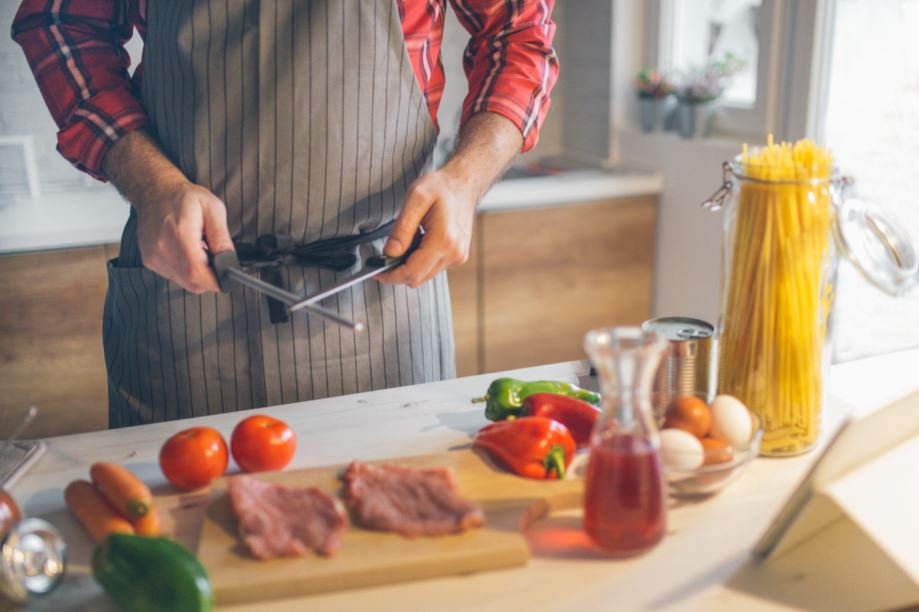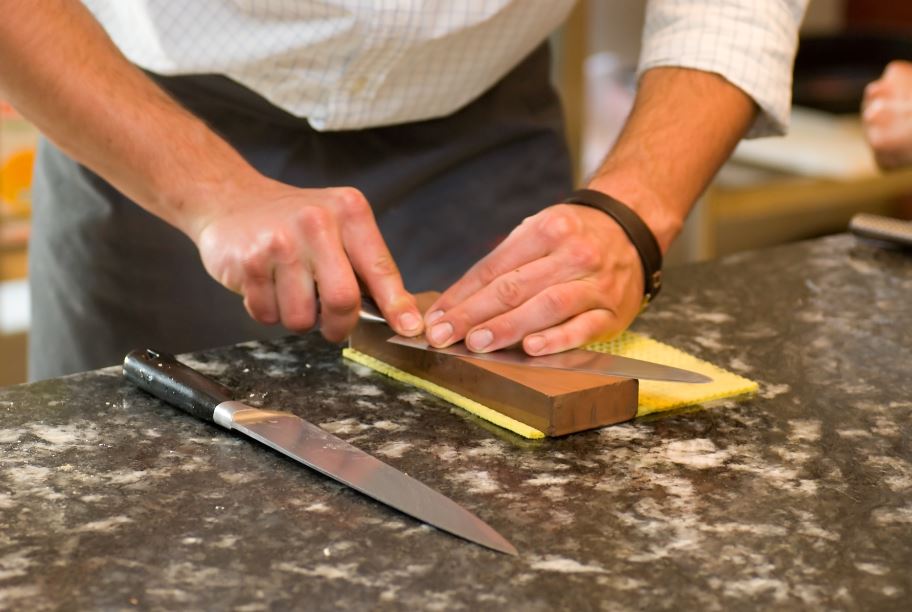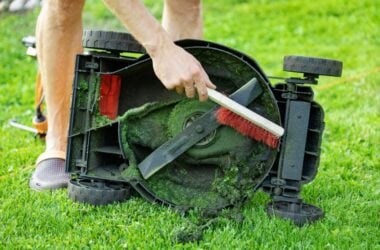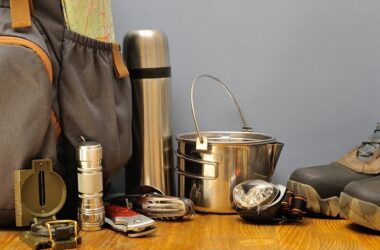A dull knife doesn’t just make cutting less efficient. It’s also more dangerous because users need to apply additional force when cutting, which could result in slippage and injury. In addition to increased danger, the quality of your food could also suffer as imprecise, and inconsistent cutting leads to more uneven cooking. Cooking at home is a great strategy for saving money, but you need well-maintained tools. This complete knife sharpening guide will help you keep your knives sharp and ready to use.
How Can I Test My Knives’ Sharpness?
Test to see if your knives could benefit from knife sharpening by using a sheet of paper. All you need to do is hold up a folded sheet of paper vertically. Either a piece of printer paper or thinner paper, such as newspaper, will work. Place the knife blade at the top of the paper at a slight angle and begin slicing away from you. If the knife doesn’t cut the paper cleanly, it may be time to sharpen it.
In many cases, you may not need to sharpen your knife so much as steel or hone it, which works with blades that are only slightly dull.
What Is the Difference Between Honing and Knife Sharpening?
While a tool such as a steel honing rod is often used for improving cutting quality, honing rods don’t actually sharpen knives. Instead, honing rods straighten the blade’s edge to make cutting safer and cleaner. If your knife becomes bent over time and could benefit from straightening, honing is a good idea in addition to sharpening.
How Often Should You Hone or Sharpen Your Knives?
Ideally, you should hone your knife on a weekly basis or even after every time you use your knife. However, it’s best to sharpen your knives once every few months or once a year, depending on the frequency of use. You should also make sure your knives are properly stored. This will not only protect your knives — it will also help you organize your kitchen.
How to Hone Knives by Using a Steel Honing Rod
Also known as a sharpening steel, a honing rod is included with many knife sets. While it doesn’t actually sharpen your knives, it will help realign the edge if it’s slightly uneven or dull.
You can use a honing rod by holding it vertically, placing the bottom firmly on the countertop. Make sure the heel of the knife blade is against the rod’s tip and keep the knife pointed at a slight upward angle, 15 degrees away from the rod.
You can then place light pressure on the blade, sliding it down the rod while pulling the knife in your direction to keep the center of the blade in contact with the center of the rod. Once the blade is down the entire length of the rod, the tip should be at the bottom, at which point you can bring the blade back up to the top to repeat the motion on both sides of the blade four or five times each.
When you’re using this technique, your blade should be properly aligned to allow for better cutting. If the paper test is still unsatisfactory, knife sharpening is the next step to take.
When Should You Use a Knife Sharpener?
If the knife is dull to the point where honing doesn’t help, this means that the edge requires some reshaping through the removal of rough steel on the blade. A honing rod won’t accomplish this, so you’ll need a reliable sharpener to get the job done.
You can sharpen your knife using a manual or electric sharpener (which is often the easiest method), or you can use a whetstone. You can also have your knives professionally sharpened, which may be ideal if you don’t have a sharpener and don’t know how to use a whetstone (though we will cover this).
Pro Tip:
When it comes to the angle of the blade, with more acuteness comes a sharper feel. For instance, a 15-degree blade will cut cleaner than a 20-degree blade, and you can modify the angle of the blade through sharpening as it narrows the edge.
Advantages and Disadvantages of Different Knife Sharpeners
If you need to sharpen your knives and a honing rod isn’t enough, there are several options available to keep your knives in great condition.
Manual Knife Sharpeners
Manual knife sharpeners contain abrasives either in the shape of a V that holds the blade when sharpening or on wheels. When using this type of sharpener, you’ll typically pull the blade through the abrasive material while applying even pressure.
Advantages of Using Manual Sharpeners for Knife Sharpening
Manual sharpeners are the least expensive option if you want to sharpen your knives. They also keep the knife securely in place while sharpening for even results, and they are ideal for use with most types of kitchen knives. Their compact size makes them easy to store just about anywhere for convenient access.
Disadvantages of Using Manual Sharpeners for Knife Sharpening
Unfortunately, even the best manual sharpeners won’t fix your knives if they’ve sustained a lot of damage. They’re also not the best tool to use for maintaining more high-end knives, which require the use of a whetstone in most cases.
Electric Knife Sharpeners
Electric knife sharpeners are highly convenient and don’t require the work that comes with manual sharpeners. Unlike manual sharpeners, the abrasive is used on motorized wheels for more automated sharpening.
Electric sharpeners are incredibly easy to use. Simply turn the sharpener on and keep a firm grip on the knife as you pull the blade along the slots where they’ll brush against the abrasive wheels. Repeat the process on both sides until the blade is sharpened to your liking.
Advantages of Using Electric Sharpeners for Knife Sharpening
One of the key advantages of using an electric sharpener is the use of spring-loaded guides that help secure the knife in place. This allows for more even sharpening along the blade. If your blades have sustained a good deal of damage, electric sharpeners are also better at repairing this than their manual counterparts. They also include several slots, each of which provides a different level of sharpness.
Disadvantages of Using Electric Sharpeners for Knife Sharpening
If you’re looking for a cheaper option, you’re better off getting a manual sharpener. Also, electric sharpeners are incompatible with knives that have a full bolster since you can’t pass the entire blade through the sharpener slots.
Pro Tip:
Find a good electric sharpener from a leading brand. Higher-quality sharpeners will prevent excess metal loss with fine, coarse, and nonmotorized steel options for sharpening.
Whetstones
If you have a high-end collection of knives, a whetstone is the best tool to use. However, there’s a certain art of mastering the whetstone, which can take many tries to get the hang of when sharpening your knives. Sometimes, it’s best to leave whetstone sharpening to the pros and send your knives out for professional sharpening services. But with some practice, you can also make good use of the whetstone. Mastering the whetstone can also help you save some money in the long run.
What Makes the Whetstone the Best Knife Sharpening Tool?
The whetstone is such a popular and timeless tool because it’s by far the most adaptable. The user simply holds the knife at a specific angle based on the type of blade, which means you can use it to sharpen any kind of knife, including knives with a full bolster. Whetstones are also often inexpensive compared to other sharpening tools.
The downside is, as we’ve mentioned, it can take some time getting used to using the whetstone. Why? You have to hold the knife at just the right angle to get the best results. Patience is also a required virtue, as it can take a long time to sharpen duller blades.
How to Use a Whetstone for Knife Sharpening
To use a whetstone, start by placing either wet paper towels or a rubberized shelf liner beneath the whetstone to keep it secure, with the rough side of the whetstone facing upward.
Next, you’ll want to keep the knife facing outward and place the blade at the right angle for the type of knife you’re using. For example, Western-style knives should be at 20 degrees, while Japanese-style knives should be at 15 degrees. Keep your other hand on the top of the flat side of the blade toward the center, and make sure your fingers are far from the edge.
Move the blade along down the length of the stone using circular movements, and make sure the angle is steady until the knife tip slides off the opposite edge. Keep repeating this process on both sides until you achieve the desired level of sharpness.
Pro Tip:
When checking the sharpness of the knife while sharpening, you can slowly and carefully run your thumb against the edge — but not parallel to the blade. If you can feel the burr all along the entire length of the blade, it’s sufficiently sharpened.
For Quick and Convenient Results: Try a Coffee Mug for Knife Sharpening
If you don’t want to buy a tool to sharpen your knives but want a quick fix, you can try using a coffee mug. While they won’t yield the best results, ordinary coffee mugs make decent knife sharpening surfaces when nothing else is available, thanks to the ceramic material.
To use a coffee mug as a sharpener on the fly, simply place the mug upside down so the bottom is on top and, maintaining a 20-degree angle, place the knife on the edge of the bottom of the mug. Next, perform a sweeping motion along the entire blade as you pull the knife toward you and repeat this several times on each side of the knife. Alternate between both sides of the blade for the last two or three sweeps.
You can use a coffee mug in conjunction with a honing rod if you have one. Once you’ve finished sharpening the knife on your mug, complete six to eight swipes on a honing rod to remove any remaining kinks or burrs.
How Can I Sharpen a Knife That Has a Serrated Blade?
When sharpening a serrated blade, it’s best to use a manual knife sharpener. A manual sharpener is ideal for serrated knives because it can reach all the grooves in the blade, whether the knife is saw-toothed, pointed, or scalloped. Keep in mind that serrated blades won’t require sharpening as often as smoother blades because the teeth make contact with the cutting surface as opposed to the edge of smooth knives.
How to Store Your Knives for Longer Knife Use
Knife sharpening is essential for maintaining a clean and safe cut. Another one of the best ways to get the most from your knife collection is to store them the right way. While it’s fine to keep butter knives and other traditional table cutlery in a drawer with other silverware, you should keep your kitchen knife set in a location that’s specifically intended for these knives.
You can store them using one of several tools. One way to preserve your knife set is to use a magnetic knife strip that can magnetize your knives and keep them hanging on a wall. This will help open up more space on your countertops.
Alternatively, a universal knife block can keep your knives vertically stored to keep them safe and secure while also helping you organize your counter space. Knife guards can also slip over your blades and prevent accidental cuts while preserving the integrity of the blade.
Honing and sharpening your knives on a regular basis can help keep them in the best possible condition, whether you become a master of the whetstone or a sharpening tool. As a result, your knives will be safer, and your food will taste the way it should as you prepare weekday meals and holiday dinners.









